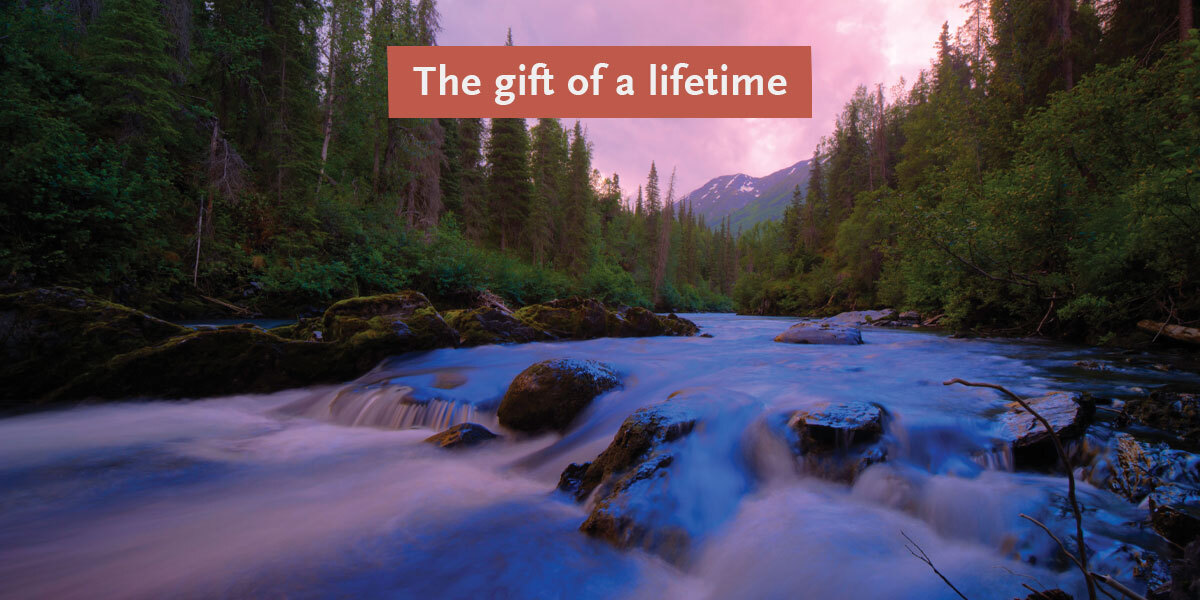Millions in federal fish passage funding are set to flow to coastal salmon watersheds.

The National Oceanic and Atmospheric Administration (NOAA) has announced a major investment in Pacific Northwest fish passage, awarding $15.5 million in grants to support 25 projects managed by Wild Salmon Center and key partners.
The funds, awarded through NOAA Restoration Center’s Community-Based Restoration Grant Program, will reach watersheds from Oregon’s Rogue River to the Quillayute Basin in northwest Washington.
“This funding means we’ll be scaling up habitat restoration work in key Pacific Northwest strongholds,” says Mark Trenholm, WSC Vice President of Conservation. “We look forward to channeling these funds into rural communities and rebuilding coastal salmon runs with our local partners.”
NOAA’s most recent awards are just the latest tranche of restoration funding from 2021’s Bipartisan Infrastructure Law (BIL) secured by Pacific Northwest Congressional leaders. The law allocates more than $1 billion to fish passage projects across the nation; last year, the U.S. Fish & Wildlife Service awarded $1.5 million in infrastructure funds for coastal Washington projects managed by WSC and our Cold Water Connection campaign partners.

Over the next several years, millions more in ecosystem resilience funding will flow from the 2022 Inflation Reduction Act. According to WSC Government Affairs Director Jess Helsley, these combined allocations mark the largest federal investment in habitat restoration and resilience in U.S. history.
“Federal agencies are recognizing the urgency of this moment for Pacific Northwest watersheds,” Helsley says. “These investments will help build the habitat resilience and cold water access that salmon need to thrive in the face of climate change.”
For the next four years, WSC and our partners will direct these funds into coastal communities in Oregon and Washington. NOAA has estimated that every $1 million invested in watershed restoration work creates 15-30 jobs. Our work on the Oregon coast bears this out: of $1.2 million WSC and our partners deployed for restoration projects in 2020, we created 29 long-term jobs and 168 seasonal jobs.
In Oregon, NOAA funds will support 13 projects that will reconnect 46 acres of tidal wetlands and 39.6 miles of coho spawning and rearing habitat. In Washington, NOAA funds will help replace 12 high-priority barriers to reconnect nearly 15 miles for native migratory fish species.
Read on for a quick glance at what NOAA’s fish passage funding will help us accomplish.
PROJECT FUNDING AT A GLANCE:
OREGON
In Oregon, NOAA awarded Wild Salmon Center $3,625,107 for 13 bundled projects* in the Nehalem, Coos, Elk, and Upper Rogue River watersheds. These projects will:
- Correct eight fish passage barriers (culverts) and replace or remove six tide gates, three diversion dams, two low-head dams, and eight rock weirs;
- Install 2.7 miles large wood in streams (88 structures, 51 pools);
- Reconnect 46 acres of tidal wetlands, 4.8 acres of floodplain, and 39.6 miles of coho spawning and rearing habitat;
- Enhance 22.4 acres and 3.5 miles of riparian buffers; and
- Return 1.5 cubic feet per second of water rights to stream flows.
* Oregon restoration partners include the Coos Watershed Association, Curry Watersheds Partnership, Lower Nehalem Watershed Council, and Rogue River Watershed Council.
WASHINGTON
In Washington, NOAA awarded Wild Salmon Center $11,942,573 for 12 fish passage barrier projects* on county or Tribally-managed roads across the Quillayute and Quinault watersheds. These projects will reconnect nearly 15 miles of reconnected habitat for native migratory fish species. WSC also helped to facilitate two NOAA capacity-building grants for Tribal communities:
- One contract totaling $123,441 to support Quileute Natural Resources’ participation in fish barrier removal and restoration project identification, prioritization, development, review, and oversight in Quillayute Basin projects.
- One contract totaling $75,000 for the Quinault Indian Nation to continue a consultant contract to conduct technical review and support Tribal interests on barrier correction projects within the Nation’s Usual and Accustomed Areas.
* Washington Tribal and local restoration partners include the Quileute Tribe, the Quinault Indian Nation, Coast Salmon Partnership, and Trout Unlimited.
RESTORATION PROJECT HIGHLIGHTS:
- On Blackberry Creek, a tributary in Oregon’s Elk River system, NOAA funds will help replace an undersized and degraded culvert to reconnect coho and steelhead with miles of upstream habitat, while ensuring road access for residents during flood events.
- On Bandy Slough in Oregon’s Nehalem watershed, NOAA funds will help remove an abandoned tidegate and restore fish passage to historic tidal wetlands also benefiting from restoration.
- On Anton and Cedar Creeks in Washington’s Quillayute Basin, NOAA funds for a culvert replacement follow prior private and state investments in project design, while leveraging additional U.S. Fish & Wildlife Service funds for project completion.
- On a Clallam County road in the Quillayute Basin, NOAA funds will help replace two barrier culverts with fish passage structures that will free more than five miles of high-quality upstream habitat for coho salmon, steelhead, trout, and lamprey.




